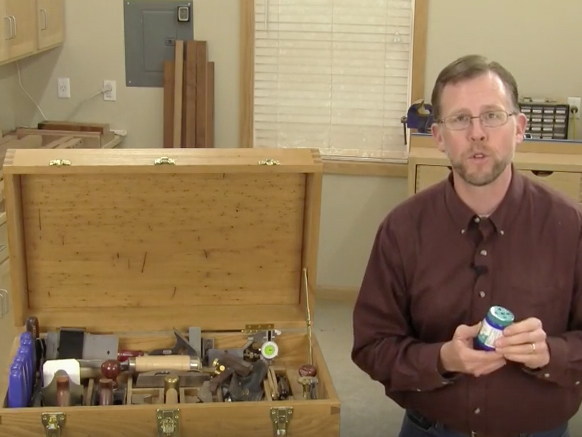
I have two sets of measuring tools in the tool chest. One comes out for those carpentry jobs or marking rough stock. That’s about it. These are my “rough” tools. The other set almost never touches framing lumber or a weekend honey-do. These are the “good” tools – the ones for woodworking.
Why do I need two sets? For all practical purposes, they’re the same tools: a combination square, try square, bevel gauge and steel rule. I purchased the “rough” tools off the rack at a home center years ago when I had no tool budget. The others, I’ll admit, are mostly Starretts. Yet, degree for degree, my “carpentry” combo square measures 90° as accurately as my Starrett square. Both the spendy and the cheapo rules verify the same length.
I guess it comes down to this: when I reach for my Starrett tools, they help me set my mind for woodworking in a way those other tools just don’t. From the first marked crosscut to the last stroke of finish, I’m — once again — aiming for that perfect project. No mistakes, no regrets. My “good” set of marking tools may just help me achieve it this time.
 I use the word “may” deliberately there, because as far as I can recall, I’ve never built that perfect project. Not a single one — and I make my living doing this! Yet, despite lots of conviction, triple-checking those critical dimensions and taking inordinate amounts of time to get my work done, mistakes still happen. A nail veers off course and pops through a cabinet panel, right where it’s in plain sight. Instead of marking off 4 5/8″, my mind wanders for a nanosecond and I mark 3 5/8″ instead. I need mirror-opposite legs but I goof with a matching pair. Shoot. Shoot. Shoot!
I use the word “may” deliberately there, because as far as I can recall, I’ve never built that perfect project. Not a single one — and I make my living doing this! Yet, despite lots of conviction, triple-checking those critical dimensions and taking inordinate amounts of time to get my work done, mistakes still happen. A nail veers off course and pops through a cabinet panel, right where it’s in plain sight. Instead of marking off 4 5/8″, my mind wanders for a nanosecond and I mark 3 5/8″ instead. I need mirror-opposite legs but I goof with a matching pair. Shoot. Shoot. Shoot!
I’m sure I’m in good company here, but I don’t know it. Mistakes are a private matter after all, especially for us Midwesterners. Do those mishaps still happen for Ian, Sam, Klausz or the rest of our mentors? Harder to imagine, but it’s gotta be true. What’s the standard of perfection for a master woodworker? I can only guess, but I bet even they hope to set the bar a little higher each time.
I love my Starrett tools. Wouldn’t trade them for anything. They inspire me to work better, harder, more carefully, even if that perfect project will always be a shadow I’m chasing. In the meantime, I peek at perfection now and then, despite the screw-ups. That little “whoosh” of air that comes from a drawer fitting sweetly in its opening, or those dovetails that slip together with just the right amount of nudge tell me I’m on the right track. For now, that’s as good as it gets. I can live with that, I guess. But I’ll keep reaching for more when the Starretts are on the bench. And, in the projects you build, I bet you do, too.





